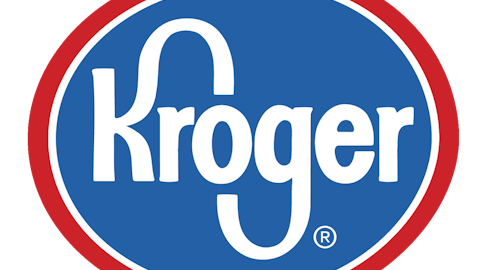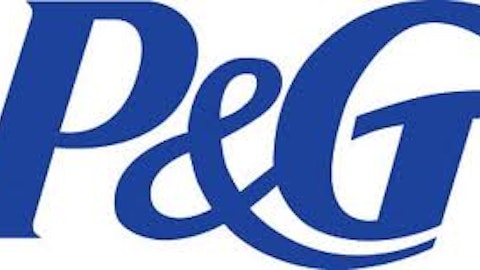Wal-Mart Stores, Inc. (NYSE:WMT) has increased only 11.3% since the beginning of the year, lagging the S&P 500’s return of 14.4%.
However, its peers including Macy’s, Inc.(NYSE:M) and Target Corporation (NYSE:TGT) have outperformed the general market, delivering gains of 24% and nearly 21%, respectively. Is Macy’s the best pick after its out-performance in the stock market? Let’s find out.
Impressive first quarter earnings growth
In the first quarter of 2013, Macy’s, Inc.(NYSE:M) experienced decent growth in both sales and net income. While revenue increased to $6.39 billion from $6.14 billion in the first quarter last year, its net income rose by nearly 20%, from $181 million in Q1 2012 to $217 million in the same quarter this year. Because of the lower number of total shares outstanding, its Earnings Per Share, or EPS, growth was much higher, at 30.23%, from $0.43 per share to $0.56 per share. The year-over-year comparable sales in the first quarter reached 3.8%.
Terry Lundgren, the company’s chairman, president and CEO felt great about the first quarter results, despite several challenges including unexpectedly cool spring weather in northern climate zones and weakness among budget-conscious consumers. He said the company will keep pursuing “myriad new growth opportunities” within its M.O.M strategies (My Macy’s, Inc.(NYSE:M), Omnichannel and Magic Selling).
Macy’s, Inc.(NYSE:M) has been a great cannibal. Since the third quarter 2011, the company had spent around $2.2 billion to retire about 60.3 million Macy’s, Inc.(NYSE:M) outstanding shares. After the first quarter 2013, Macy’s, Inc.(NYSE:M) board had raised the share buyback authorization by $1.5 billion to $2.6 billion. Macy’s is trading at $48.40 per share, with the total market cap of nearly $18.60 billion. The market values Macy’s at only 6.32 times Enterprise Value over Earnings Before Interest, Taxes Depreciation and Amortization, or EV/EBITDA, an important metric in evaluating these kinds of companies.
Wal-Mart Stores, Inc. (NYSE:WMT) and Target Corporation (NYSE:TGT)’s earnings are not as impressive
While Macy’s enjoyed great growth, Wal-Mart Stores, Inc. (NYSE:WMT)’ did not have good year-over-year growth in first quarter earnings.
Revenue increased by only 1% to $114.19 billion, while net income moved up only 1.1% to $3.78 billion. EPS came in at $1.15, 4.5% higher than the EPS of $1.10 in the first quarter last year.
The higher growth in EPS was due to the share buybacks. During the quarter, Wal-Mart Stores, Inc. (NYSE:WMT) spent around $2.2 billion to buy back around 30 million shares. Total cash returned to shareholders was around $3.8 billion including $1.6 billion in dividends. CFO Charles Holley, commented that the company estimated Wal-Mart Stores, Inc. (NYSE:WMT) would generate around $1.22 to $1.27 EPS in the second quarter of fiscal 2013.
Wal-Mart Stores, Inc. (NYSE:WMT) is trading at around $76 per share, with the total market capitalization of $250.70 billion. Wal-Mart is priced higher than Macy’s at 8.10 times EV/EBITDA. Wal-Mart has consistently increased its dividend, from $0.36 in 2003 to $1.59 in 2012. At the current trading price, Wal-Mart offers its shareholders dividend yield at 2.5%.
Target Corporation (NYSE:TGT), in the first quarter, experienced the decline in both revenue and income. Total revenue was $16.7 billion, lower than $16.87 billion in the first quarter last year.
Its net income came in at only $498 million, or $0.77 per share, worse than the net income of $697 million, or $1.04 per share in Q1 2012. In the recent first quarter, Target Corporation (NYSE:TGT) repurchased around 8.5 million shares at around $64.04 per share, with the total transaction value of $547 million. It also paid out $232 million in dividends.
For the full year, Target Corporation (NYSE:TGT) is expected to earn around $4.12 to $4.32 per share. Target Corporation (NYSE:TGT) is trading around $71.50 per share, with a total market cap of $45.9 billion. Target has a lower EV multiple than Wal-Mart but its EV multiple is higher than Macy’s, at 7.46. It also pays dividends with a lower yield than Wal-Mart at 2.1%. Macy’s offers a similar dividend yield at 2.1%.
My Foolish take
Macy’s payout ratio is the lowest of the trio, at only 24% while the payout ratios of Wal-Mart and Target are 33% and 32%, respectively. Among the three big companies, I like Macy’s the most due to the low payout ratio, impressive first quarter earnings growth and low valuation.
Anh HOANG has no position in any stocks mentioned. The Motley Fool has no position in any of the stocks mentioned. Anh is a member of The Motley Fool Blog Network — entries represent the personal opinion of the blogger and are not formally edited.
The article What Department Stores Should Investors Buy? originally appeared on Fool.com is written by Anh HOANG.
Copyright © 1995 – 2013 The Motley Fool, LLC. All rights reserved. The Motley Fool has a disclosure policy.






